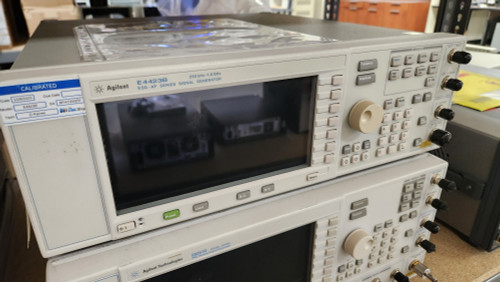Overview
The Keysight N5181B MXG RF Analog Signal Generator, with its pure and precise hardware performance, generates the signals you need for all of your R&D requirements and lets you take your devices and designs to the limit. It provides phase noise, non-harmonics, output power, and much more:
- Test radar receiver sensitivity or characterize ADC or mixer signal-to-noise ratio, with unmatched phase noise and spurious performance
- Drive receiver front-ends for out-of-band rejection with industry-leading output power
- Simulate multi-channel composite analog modulation with integrated multifunction generator
- Create variable RADAR PRI and pulse width with integrated pulse train generator









